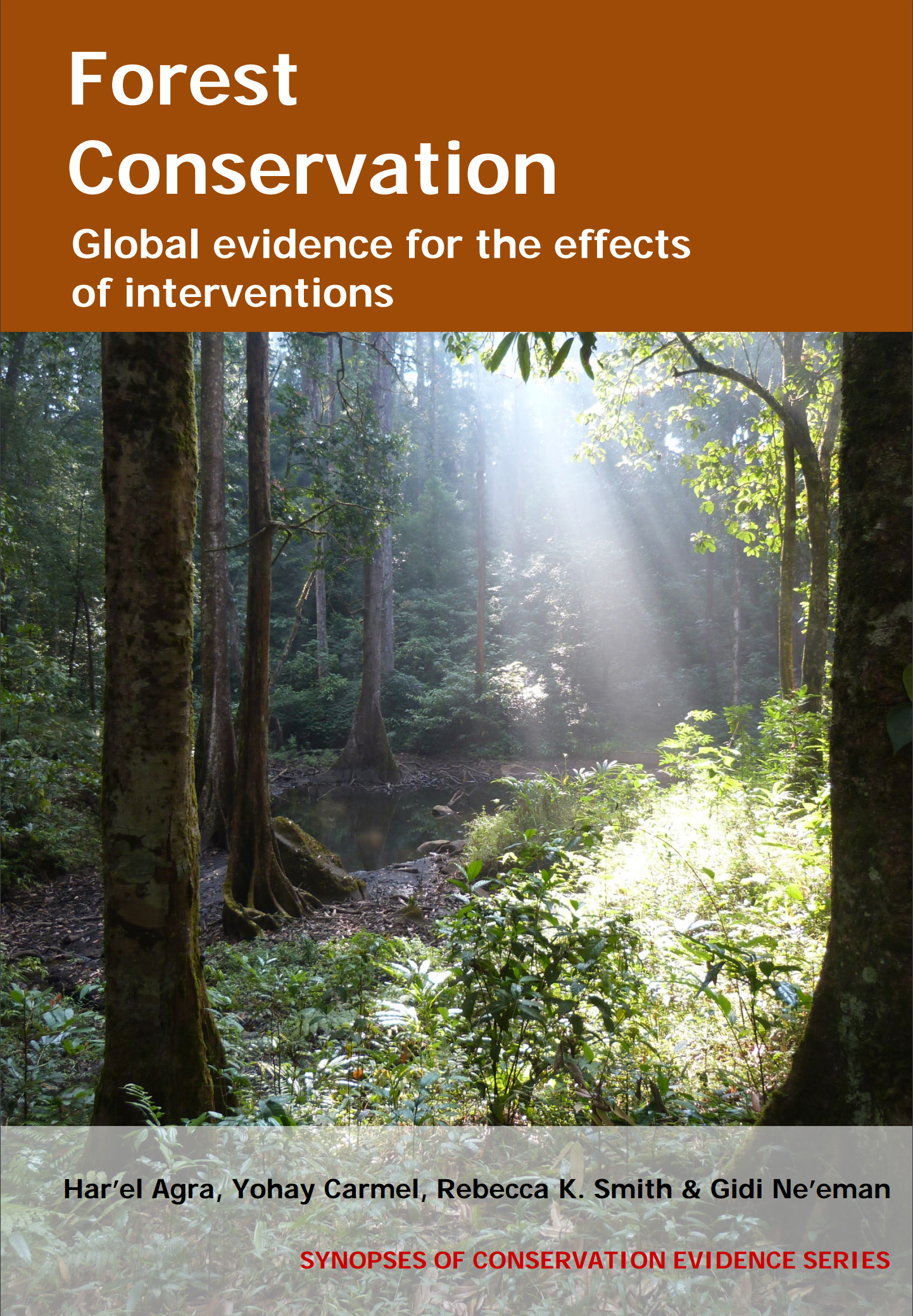Use fertilizer after tree planting
-
Overall effectiveness category Unlikely to be beneficial
-
Number of studies: 5
View assessment score
Hide assessment score
How is the evidence assessed?
-
Effectiveness
38% -
Certainty
45% -
Harms
3%
Study locations
Supporting evidence from individual studies
A controlled study in 2001-2003 in Mediterranean type shrubland in France (Larchevêque et al. 2008) found no effect of sewage sludge compost application on survival or size of planted downly oak Quercus pubescens seedlings. Seedling annual survival rate (93-100%), height (30.6-33.0 cm) and basal diameter (5.9-6.1 mm) were similar between treatments. About 50 seedlings were planted in May 2001 in each of three 0.13 ha treatment plots: control without compost, 20 and 40 kg compost/seedling. Data were collected in 2002 and 2003.
Study and other actions testedA replicated, controlled study in 1999-2006 in boreal forest in Quebec, Canada (LeBel, Thiffault & Bradley 2008) found that fertilizing increased the height of planted black spruce Picea mariana seedlings. Seedling height was higher in fertilized (76 cm) than control plots (57 cm), while annual relative growth was similar between treatments (4.7-4.9%). Data were collected in 2005 and 2006 in six fertilized (nitrogen, phosphorus, potassium mineral fertilizer at time of planting) and six control plots established within a 0.2 ha area. Each plot was planted with 10 black spruce seedlings at 1 m spacing in June 2000.
Study and other actions testedA replicated, controlled, randomized study in 1995–2007 in a limestone quarry in Western Australia (Ruthrof, Bell & Calver 2009) found that adding fertilizer to the soil did not increase the survival, height, diameter or health of tree seedlings. One experiment found that the fertilizer did not affect survival (no data), height (fertilized: 3.2–4.9 m; unfertilized: 4.4–5.2 m), diameter (fertilized: 0.3–12.9 cm; unfertilized: 4.6–7.8 cm) or health class (fertilized: 4–5; unfertilized: 3–4.4) of tuart Eucalyptus gomphocephala and limestone marlock E. decipiens seedlings. Another experiment found that the fertilizer did not affect survival (no data), height (fertilized: 1.6–6 m; unfertilized: 1.6–6.8 m), diameter (fertilized: 2.8–6.2 cm; unfertilized: 2–7.9 cm) or health (fertilized: 2.3–5; unfertilized: 3.5–4.5) of tuart, limestone marlock and coojong Acacia saligna seedlings. Experiment one consisted of four blocks each containing six plots (6 × 10 m). Experiment two consisted of four blocks each with four plots (5 × 6 m). Half of the plots in each experiment were fertilized once (superphosphate: 400 kg/ha and potassium chloride: 100 kg/ha). Five seedlings of each species were planted/plot. After 12 years, the survival, height, diameter and health class (index based on stress, herbivory and nutrient deficiencies, 1: dead; 5: healthy) of all seedlings was assessed.
Study and other actions testedA replicated, controlled, before-and-after study in 2002-2007 in maritime pine Pinus pinaster forest in Portugal (Pires & Xavier 2010) found that fertilizing increased the size of planted maritime pine trees after cutting and chipping but not after cutting and removal of understory vegetation. After cutting and chipping, growth of maritime pines was greater in fertilized plots compared to unfertilized plots (fertilized: 48 m3/ha; unfertilized: 32 m3/ha). After cutting and removal, growth of maritime pine was similar between treatments (fertilized: 31; unfertilized: 25 m3/ha). Maritime pine trees were measured in July 2002 (immediately after cutting and removal/chipping) and in 2007 in three replicates of fertilized (20 g nitrogen/tree in September 2002) and unfertilized treatments (~800 m2) in cut and removed (all plants except maritime pine clearcut and removed) and three in cut and chipped plots (all plants clearcut and chipped). Maritime pine trees were planted in 1996 at 1,333 trees/ha.
Study and other actions testedA randomized, replicated, controlled study in 2008–2009 in two sites in degraded tuart Eucalyptus gomphocephala woodlands in Western Australia (Ruthrof et al. 2012) found that a range of soil enhancers including fertilizer did not increase tuart seedling health, but had a mixed effect on seedling survival and height. At one site, seedling survival and height were greater in plots treated with fertilizer tablets (survival: 96%; height 50 cm), fertilizer + moisture retaining chemicals (survival: 80%; height 39 cm), fertilizer + moisture retaining chemicals + metal ion retaining agent (survival: 82%; height 37 cm) than in untreated plots (survival: 54%; height 28 cm). At a second site, there was no effect of treatments on seedling survival or height (see paper for details). Health class was not affected by any of the treatments, at either site. Each site had three blocks each with six plots (6 × 10 m) containing 20 tuart seedlings. Each plot received one of the following treatments: fertilizer tablets, a clay-based amendment, a biological stimulant for soil microbes, fertilizer + moisture retaining chemicals, fertilizer + moisture retaining chemicals + metal ion retaining agent, or was left untreated (for details see study, fertilizer treatments differed). After one year the survival, growth and health of all seedlings was assessed. Seedling health class was based on general vigour, crown density, colour and amount eaten by herbivores.
Study and other actions tested
Where has this evidence come from?
List of journals searched by synopsis
All the journals searched for all synopses
This Action forms part of the Action Synopsis:
Forest Conservation
Forest Conservation - Published 2016
Forest synopsis





)_2023.JPG)














